Crossing the Grand Canal in Venice, there are 4 bridges. Rialto Bridge is the oldest and the most famous one, while the other two are more recent. The fourth bridge, instead, is modern.
Their stories are very interesting and we look forward to sharing them with you.
As a city built on water, in fact, for so many years, it was so difficult to move from one place to another in Venice, and actually very expensive.
Let's explore them.
The 4 bridges that cross the Grand Canal: discovering the symbols of Venice
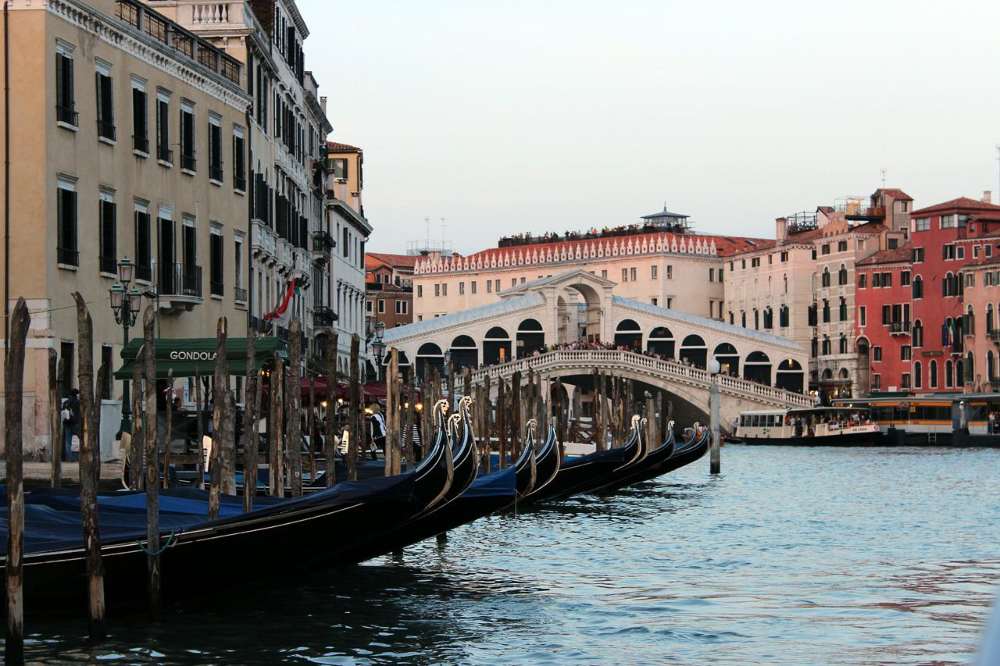
Venice has no less than 435 bridges. We have collected the stories and the curiosities of the most famous bridges in this article.
Some of them are actually very small and for private use only. Many of them, however, are very impressive and built on stone or iron (but, as we will see, not all of them).
Crossing the Grand Canal (Canal Grande in Italian), there are the most important bridges of Venice. These are the only 4 connections over this important waterway.
The most famous one is certainly the Rialto Bridge, but you will see later that also the other 3 have an amazing story to share.
Let's start with the oldest one!
1. The oldest bridge of Venice that crosses the Grand Canal
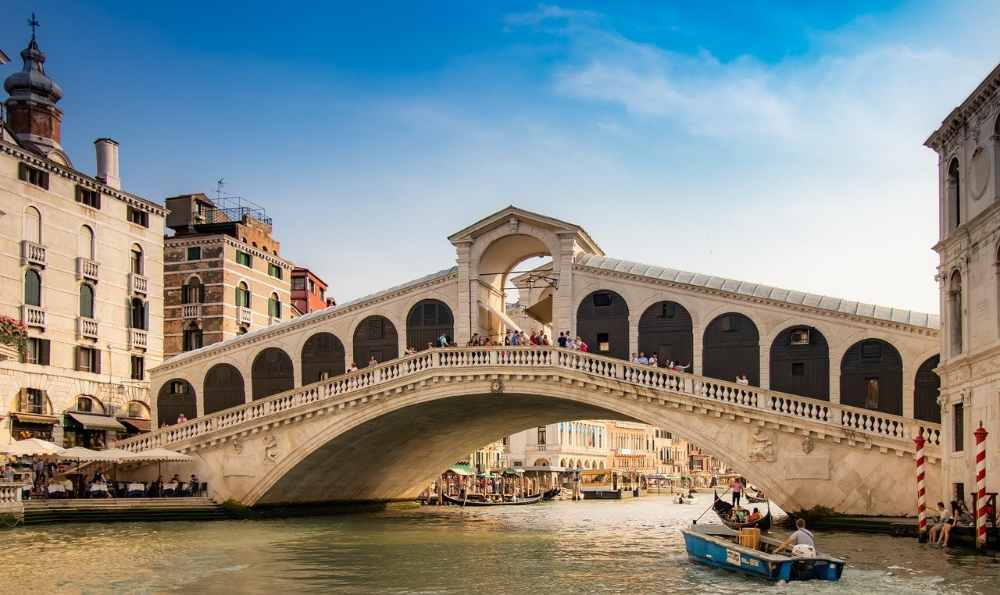
Among the only four bridges spanning the Grand Canal, the oldest and most famous one is certainly the Rialto Bridge.
The bridge connects the Sestiere di San Polo with San Marco, so it's likely that you will cross it on your way from the railway station (or Piazzale Roma) to San Marco.
The curious History of the symbol of Venice: from a boat bridge to a wooden one
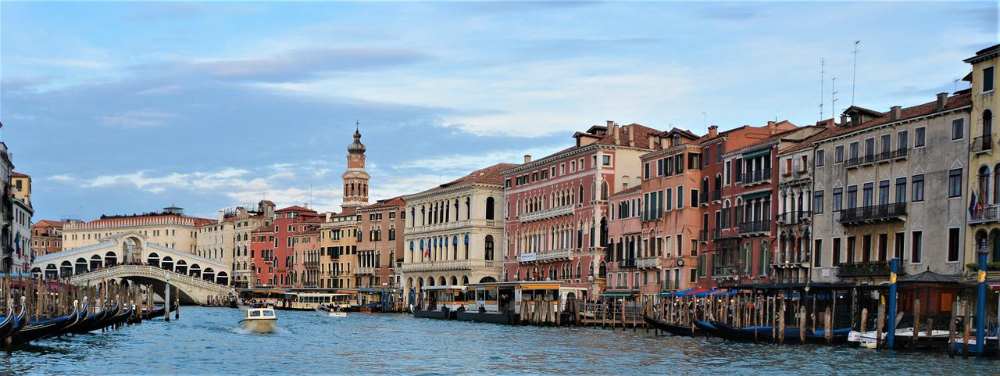
The story of Ponte di Rialto began in 1181 when a pontoon bridge (or floating bridge) was built by Nicolò Barattieri.
It was called the 'money bridge' (Ponte della Moneta in italian) because people had to pay to cross it.
However, the Rialto area became more and more important over time, due to the presence of the famous Rialto market. In 1255, instead of a pontoon bridge, a wooden bridge was built.
From a wooden Rialto to a stone bridge
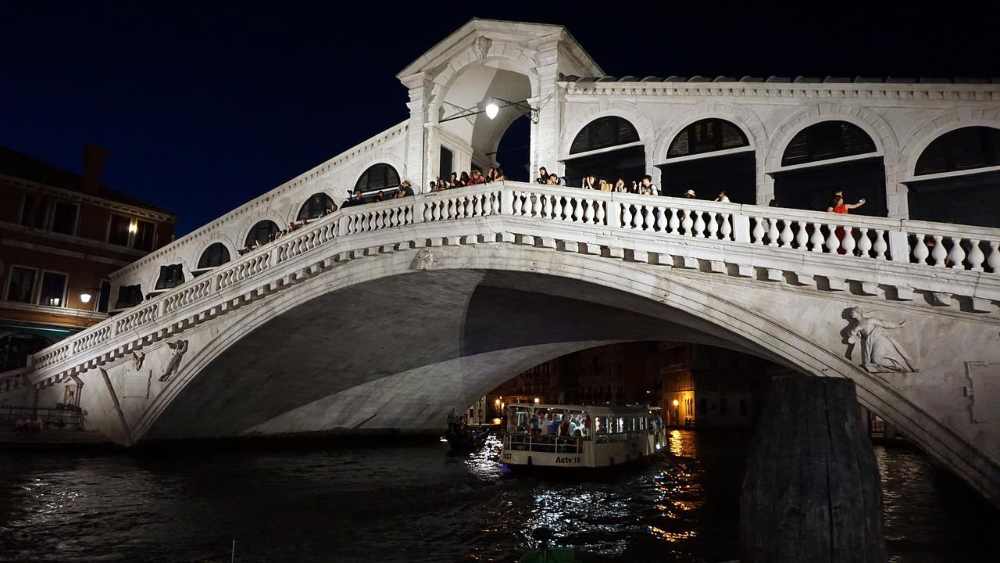
The wooden bridge was subject to fires and frequent collapse.
For these reasons, during the XVI century Venice decided it was time to replace the wooden structure with a stone one.
Many famous architects were asked to prepare a project, like Sansovino and Palladio, but their idea for the bridge was too complicated.
The selected project was Antonio da Ponte's one, who imagined a single arched stone bridge.
The construction of the Rialto bridge, for as we know it today, began in 1588.
2. The only wooden bridge crossing the Grand Canal
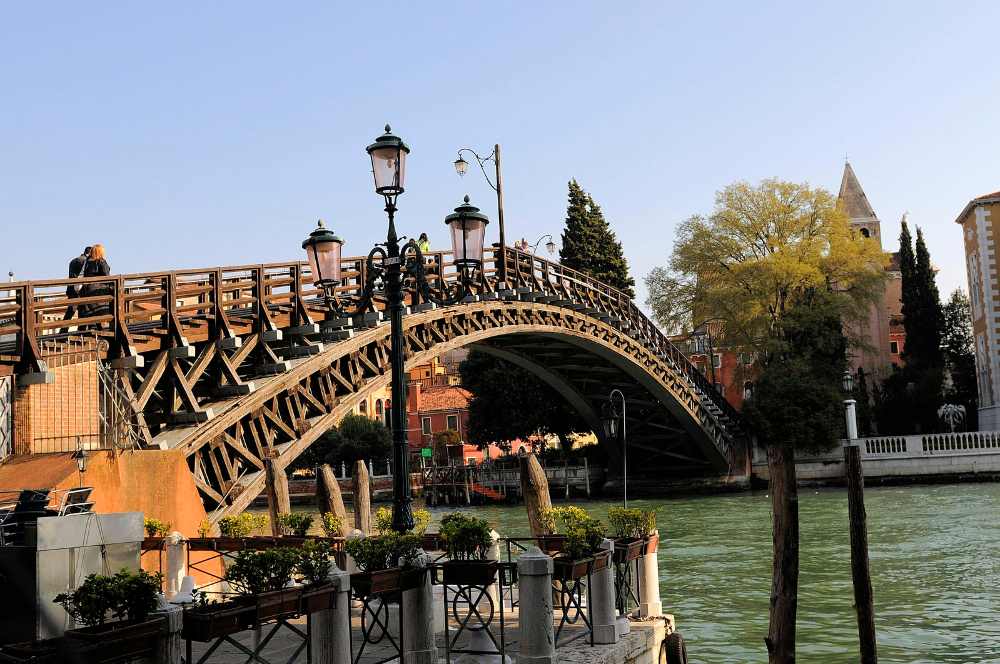
The southern bridge spanning the Grand Canal in Venice is certainly the Accademia Bridge (or Academy bridge). It connects the Sestiere of Dorsoduro to San Marco Sestiere.
Why is it so called? When that bridge was built in the first place in 1854, it was called the Ponte della Carità (Charity bridge), since it was close to the Church and the Scuola Grande of the same name.
Time passed and these places became the seat of the Accademia di Belle Arti (now the Gallerie dell'Accademia, a wonderful museum). For this reason, also the name of the bridge changed into the actual Ponte dell'Accademia.
The history of the wooden bridge
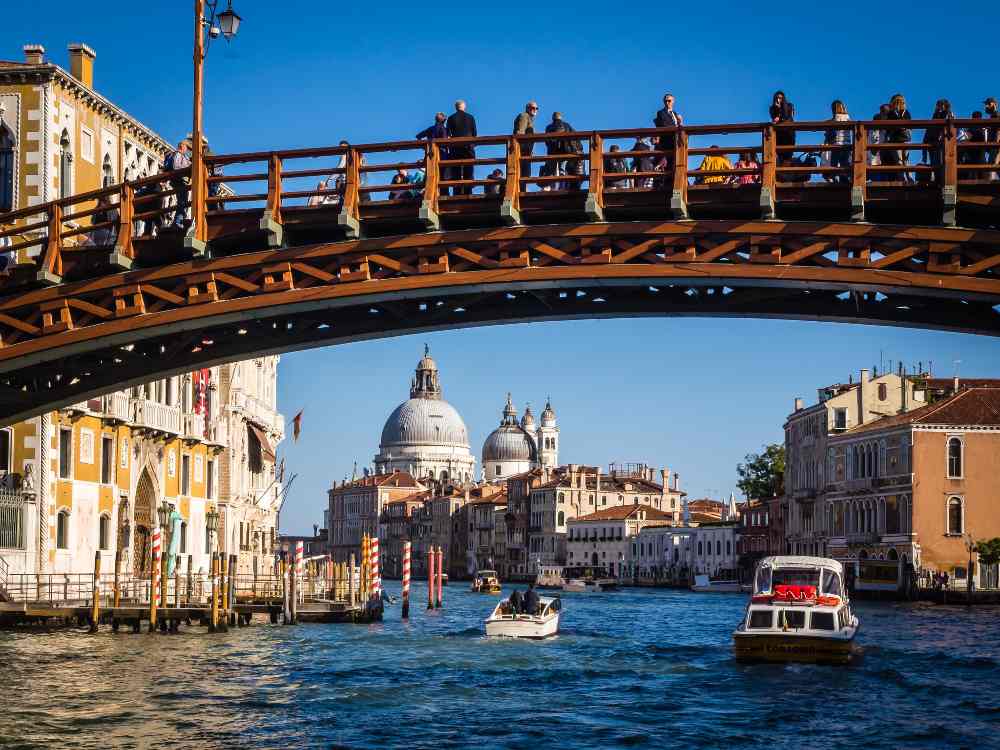
For centuries, Rialto bridge was the only existing bridge over the Grand Canal. It was not before the XIX century that it was clear that other two bridges over the most important Venetian waterway were necessary.
The first bridge to be built was the Ponte della Carità, we mentioned earlier. However, a hundred years later it became necessary to rebuild it for its structural problems.
In 1933 a wooden bridge was built by Eugenio Mozzi in just 37 days. At the time, it was the biggest arched wooden bridge in Europe.
A wooden structure, however, requires frequent restoration. In the Eighties, another timber bridge was realized, but on a steel structure. In 2018, the wooden part was substituted, but maintaining its steel core.
3. The bridge in front of the train station
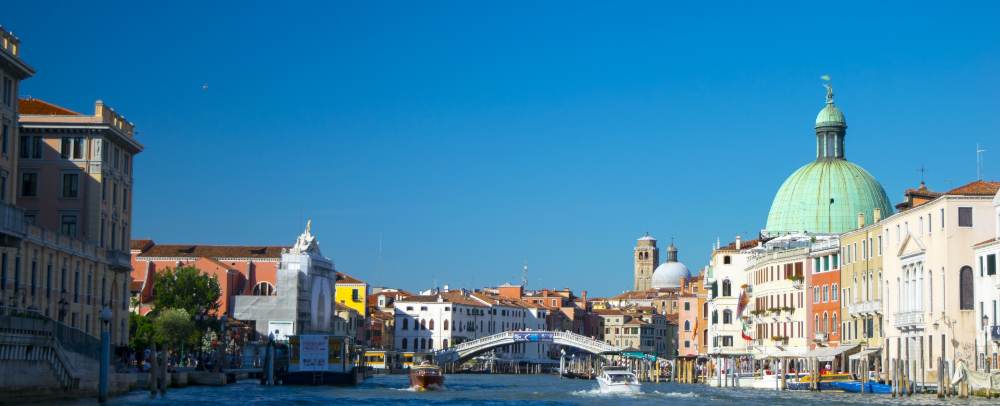
Ponte degli Scalzi is one of the first bridges you will see once you arrive in Venice. In fact, it is built in front of the railway station, connecting Sestiere di Cannaregio with Sestiere di Santa Croce.
Why is it so called? 'Scalzi bridge' literally means the 'barefoot bridge'. Why is that so?
Like the other bridges in Venice we saw in the article, it takes its name for the nearby Chiesa di Santa Maria di Nazareth, often called the Chiesa degli Scalzi. In fact, the Church belongs to the religious order of the Carmelitani Scalzi.
History of the bridge of the "barefoot people"
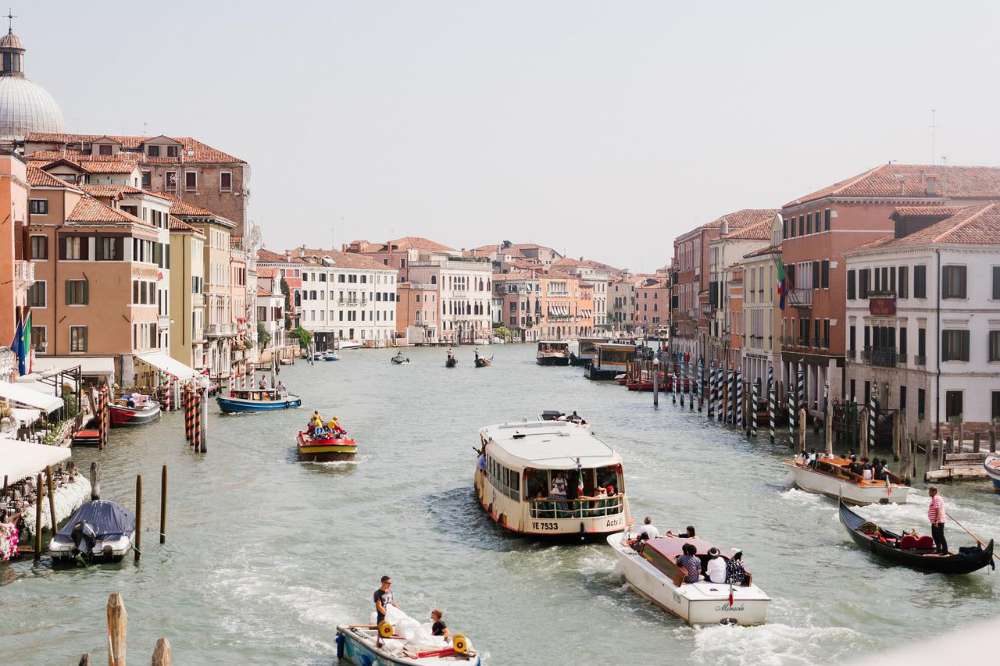
The first bridge to be built in that area was a cast iron one, which was not appreciated by the Venetians. Additionally, it was not big enough to allow boats with a mast to pass under it. By the beginning of the XIX century it was necessary to rebuild it.
Engineer Eugenio Miozzi was entitled to the new project and the cast iron bridge was substituted with a stone one, made by the white Pietra d'Istria. The bridge was ready to be crossed in 1934.
4. The last bridge ever built on the Grand Canal
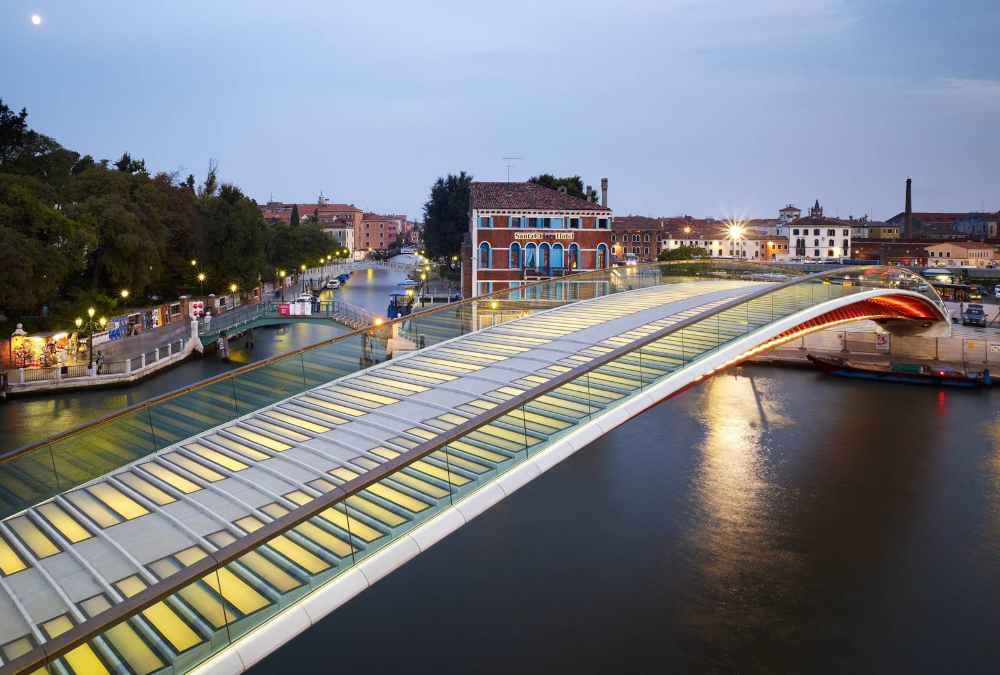
Very close to the Ponte degli Scalzi, there is the Calatrava bridge, the most recent one of the only four bridges spanning the Grand Canal.
The Ponte della Costituzione, as it is called in Italian, connects the Santa Lucia railway station to Piazzale Roma.
Why this name? The actual name is Ponte della Costituzione (or Constitution bridge). It was suggested by the previous Mayor of Venice, Massimo Cacciari, to honor the Italian Constitution that, back in 2008 when the bridge was ready, was 60 years old.
However, Venetians and tourists usually call it the Ponte di Calatrava, honoring Santiago Calatrava, the famous Spanish architect.
(Brief) History of the newest bridge on the Grand Canal
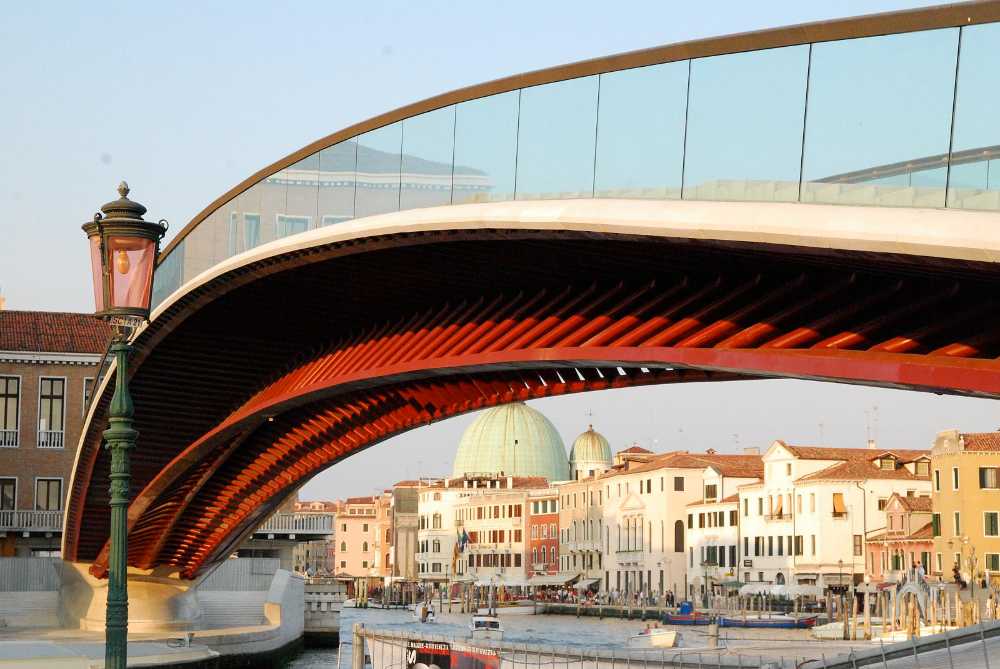
The great importance of Venice from its tourist attractions makes the building of a new bridge necessary.
Many architects like Le Corbusier or Frank Lloyd Wright were interested in the project but it was Santiago Calatrava who, in 1997, gifted the city of Venice with the project of the fourth bridge over the Grand Canal.
The construction works began in 2003 and lasted for almost 6 years, due to the difficulties the team faced but also to the many remonstrances. Local people claimed that it was too expensive, difficult to cross for the steps of different sizes, and it was not wheelchair accessible. It was then realized a structure (the so-called ovovia), to let wheelchairs cross the bridge.
Even though it is one of the four bridges on the Grand Canal and it is useful for those who need to reach the train station or Piazzale Roma, neither Venetians nor tourists truly like it.
Have you ever crossed the four bridges over the Grand Canal in Venice?
Would you imagine exploring Venice without these four bridges?
They in fact truly make your stay in the lagoon more comfortable. Cars are not allowed on these bridges so that they are for pedestrian use only.
They have actually become four great symbols of the city and we could not imagine reaching Piazza San Marco or some other great spots of Venice without them!

